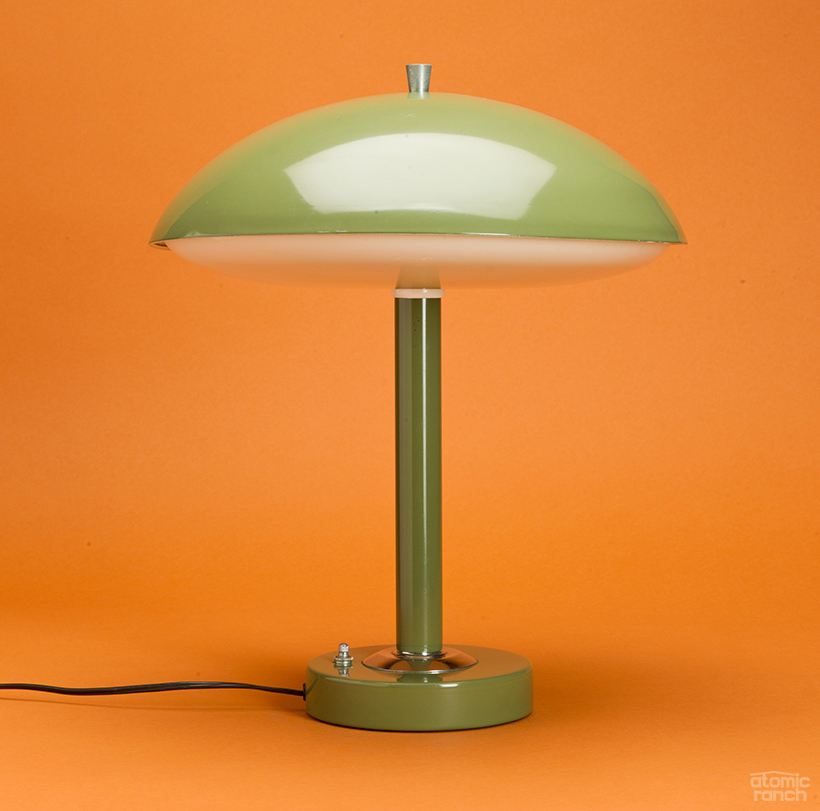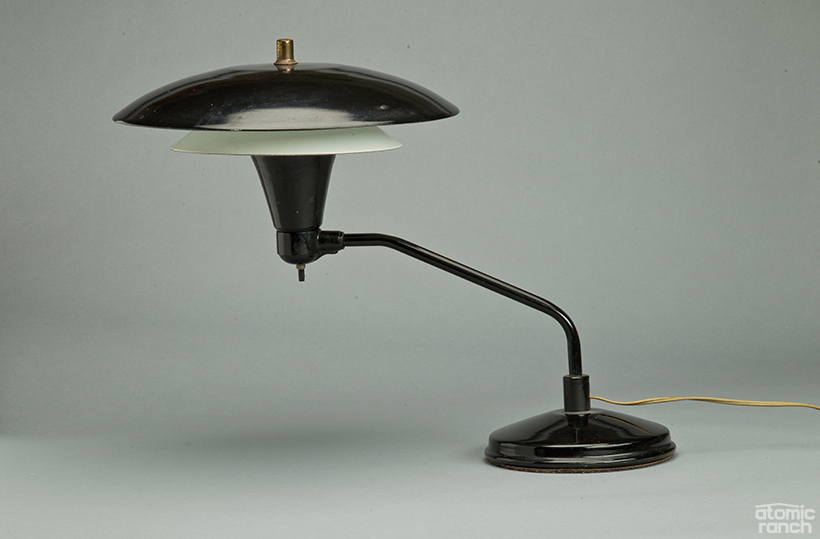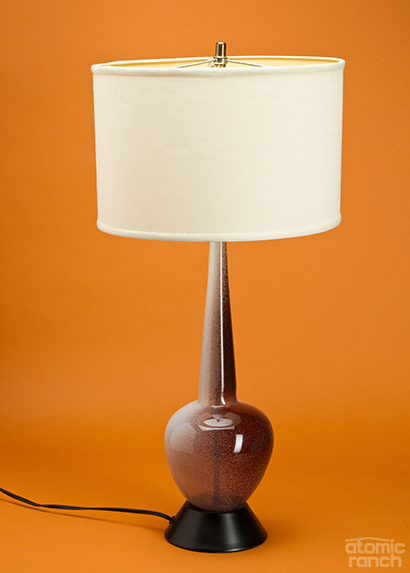Along with your furniture, mid century lamps will contribute to the midcentury look in your home. But how do you go about collecting vintage MCM lamps that will be authentic pieces in your collection? Here are some basics to get you started.

Know The Look
Like midcentury architecture, furniture and textiles, the lamps from this period have geometric shapes, simple lines and a Space Age feel. Look for shapes such as globes, hourglasses and rings to kickstart your search. In terms of materials, MCM lamps were made with myriad materials, including ceramic, wrought-iron, brass and fiberglass.
Several famous lamps include the Bubble lamp collection by George Nelson for Howard Miller (starting in 1952), the Artichoke lamp by Poul Henningsen for Louis Poulsen in 1958 and the Luminator lamp by Achille Castiglioni in 1954.
A few facts about these lamps: George Nelson’s famous lamps, while now sold by Herman Miller, were originally designed for a separate lighting company owned by Herman’s son, Howard Miller. The Howard Miller company is no longer active. Also, while Charles and Ray Eames are often credited with designing lighting, this is myth—they did not. They left the lighting design to other designers.

Evaluate The Piece
When you evaluate an MCM lamp, there are a few things to watch for. First, look at the condition of the piece. Is there any damage? If so, does it look repairable? Check for evidence of past repairs or repainting; any previous modifications may decrease the value of the piece. If the lampshade is made of glass, pay particular attention to any damage to the shade. Glass lampshades often constitute a large portion of the overall value.

You’ll want to check that the lamp works, but before you do, look at the condition of the cord. Does it look old or damaged? If not, a previous owner may have already replaced it. If it has any exposed or frayed wires, don’t plug it in—you’ll need to replace it. You can often do so with a lighting kit, but may need to take it to a professional, depending on the type of lamp.
Once you’ve looked at the condition, try to find the manufacturer. Turn the lamp upside down and look at the bottom. The manufacturer mark may be a label, embossed stamp or raised imprint. If there are no clues on the bottom, check the rest of the piece, including the bulb socket—sometimes the manufacture imprint is there on the metal. Look on the lampshade too, though don’t assume that the base and shade come from the same manufacturer.
There are a few major companies that might mean you’ve struck gold: Stiffel, Louis Poulsen, Herman Miller, George Kovaks, George Nelson. The lamps from these companies are a hot commodity, so you may want to hold out for a piece from one of them.
While the thrill of the hunt for truly vintage MCM lamps is worthwhile pursuit, many classic designs are still in production today. Here are some sources for where you can find new versions of classic MCM table lamps.
Shop Mid Century Lamps



If you’re looking for more mid century lamps and lighting inspiration, read on for Design-Focused MCM Lighting, Style Spotlight: MCM Ceiling Lighting and Radiate Retro: Exterior Lighting Picks. And of course, don’t forget to follow us on Instagram, Facebook and Pinterest for more Mid Century Modern inspiration!













